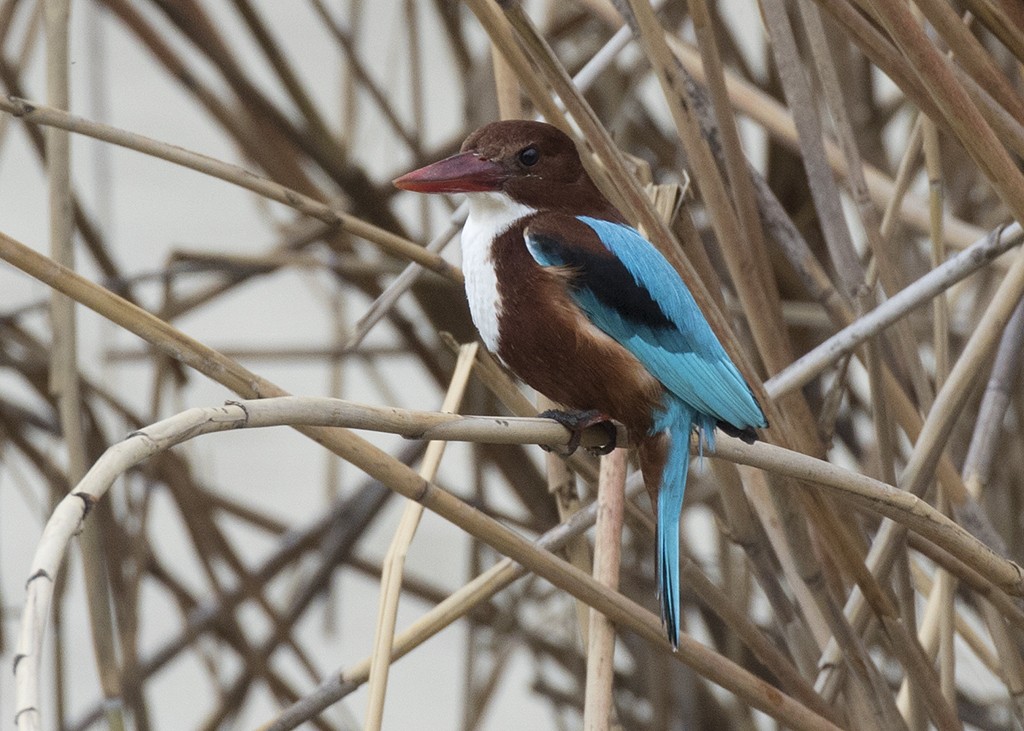White-throated Kingfisher
A species of Typical Woodland Kingfishers, Also known as Smyrna Kingfisher Scientific name : Halcyon smyrnensis Genus : Typical Woodland Kingfishers
White-throated Kingfisher, A species of Typical Woodland Kingfishers
Also known as:
Smyrna Kingfisher
Botanical name: Halcyon smyrnensis
Genus: Typical Woodland Kingfishers
Content
Description People often ask General Info
 Photo By Zeynel Cebeci , used under CC-BY-SA-4.0 /Cropped and compressed from original
Photo By Zeynel Cebeci , used under CC-BY-SA-4.0 /Cropped and compressed from original Description
The white-throated Kingfisher is a brightly colored bird with a distinctive white throat and blue wings. It inhabits rivers, lakes, and coastal areas, and feeds on a variety of prey such as fish, frogs, and insects. The kingfisher is known for its bold, dive-bombing hunting style, diving from a perch to catch prey in the water. During the breeding season, the White-throated Kingfisher is known for its loud, cackling call. This species is widely distributed across Asia. 
Size
19 - 21 cm
Life Expectancy
5.5 years
Nest Placement
Tree
Feeding Habits
White-throated Kingfisher's diet is diverse, including crustaceans, insects, earthworms, rodents, snakes, fish, frogs, and occasionally small birds. They forage actively, employing various hunting techniques, and show a predilection for aquatic and terrestrial prey. Young white-throated Kingfishers primarily consume invertebrates.
Habitat
The white-throated Kingfisher predominantly inhabits diverse open landscapes across broad geographical regions, which include plains and elevated areas up to 5000 meters. Its habitat comprises water bodies like dams, ponds, and mangrove edges, as well as terrestrial environments such as farmland, rice fields, and lightly forested areas. The species typically avoids dense forests but may occupy clearings or teak woodlands in certain regions. White-throated Kingfisher often occupies habitats with available perches like trees, wires, or bamboo and is less common at altitudes exceeding 2300 meters.
Dite type
Piscivorous
People often ask
General Info
Feeding Habits
Bird food type
Distribution Area
The range of the species is expanding. This kingfisher is widespread and populations are not threatened. Average density of 4.58 individuals per km. has been noted in the Sundarbans mangroves. 